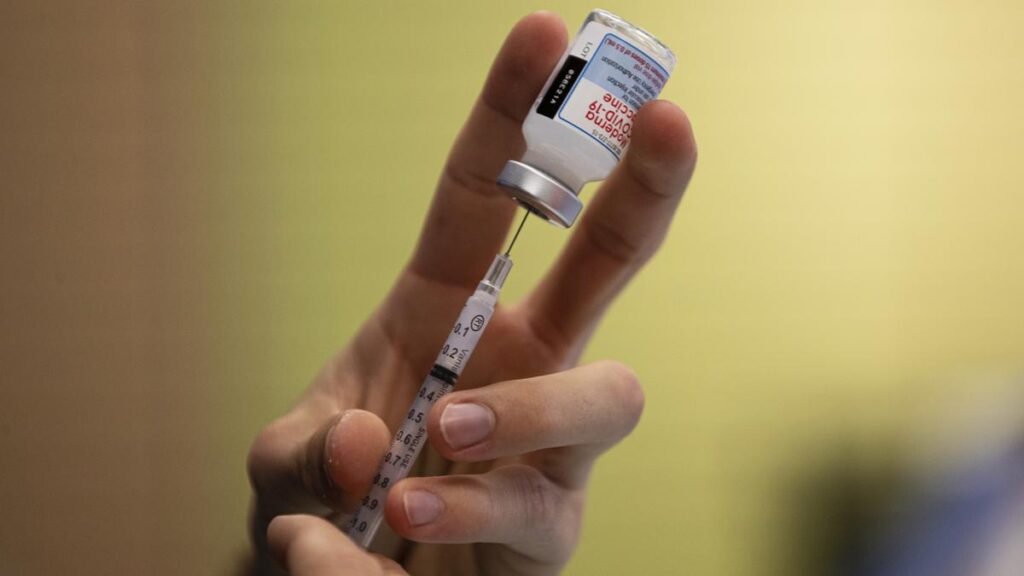Health workers prepare doses of the Moderna coronavirus vaccine in Barboursville, United States, November 4, 2021. Photo credit: Sholten Singer/AP
An ideal vaccine would provide near-complete protection against infection and mild disease after just one shot. It is easy to administer and has no side effects. Protective immunity lasts a lifetime.
Are these expectations too idealistic?
In a real-world scenario, no single vaccine would provide such an advantage. The main challenges facing vaccine developers are vaccine durability, lack of immune correlates of protection, and inability to protect against infection and transmission. But the biggest bottleneck of these three is that vaccines do not provide long-term protection.
Recently, the authors reviewed 34 licensed vaccines for their duration of protection against various infectious diseases. Only five can provide long-term protection.
How do vaccines provide lasting protection?
Immunity after infection (natural immunity or vaccine-induced) occurs primarily through the body’s production of antibodies. A specific type of immune cell known as a plasma cell is derived from B cells in the lymph nodes and secretes these antibodies.
Not all B cells and plasma cells are the same type. Most of them are short-lived, producing antibodies within a few weeks and then dying. As a result, the concentration of antibodies in the body decreases after a few weeks. However, in the lymph nodes, an important lymphoid region, germinal centers (GCs) undergo a long selection and maturation process known as affinity maturation to generate memory B cells. GCs are the engines of antibody evolution and the workhorses of immune cells that provide durable immunity. The name memory B cells refers to the ability of these cells to remember antigen characteristics over long periods of time. When an antigen or microorganism re-enters the body, memory B cells quickly identify it and begin producing antigen-specific plasma cells. This rapidly increases antibody concentrations and protects the individual from disease.
Some plasma cells, known as long-lasting plasma cells (LLPCs), also migrate to the bone marrow and survive for long periods of time, where they promote the production of antibodies. Therefore, the ability of a vaccine to confer long-term protection depends on its ability to induce the production of LLPCs. The goal of all vaccine developers is for the vaccine to generate these cells in the bone marrow.
However, while most vaccines generate memory B cells, not all of them convert into LLPCs. For this to happen, special signals from B cell receptors are required. Cross-links between these receptors (called BCR cross-links) and the antigens present in the vaccine cause the release of T cells. Therefore, the type of antigen included in the vaccine, which can also cause cross-linking, determines the generation of LLPC.
New evidence about LLPC
A new study in Nature Medicine provides further evidence of the importance of LLPC. Researchers detected the presence of distinct subsets of antibody-secreting cells (ASCs), namely LLPCs and short-lived ASCs (including non-LLPCs), in the bone marrow of 19 healthy volunteers aged 20 to 65 years, 2.5 to 33 months post-dose. researched within. mRNA shot for the new coronavirus infection (COVID-19).
They compared this data to the presence of LLPC and non-LLPC specific to tetanus and influenza.
All 19 had received a quadrivalent influenza vaccine within 1 to 12 months of each bone marrow aspirate. All had received tetanus vaccination in childhood, with recent booster vaccinations ranging from 1 month to 24 years from the time of bone marrow aspirate. (Aspiration refers to the method of extracting semi-liquid bone marrow.)
The results were amazing. We showed that non-LLPCs specific to COVID-19, influenza, and tetanus vaccines were present at relatively similar frequencies in aspirates, but LLPCs specific to influenza and tetanus were present at relatively similar frequencies. However, there were almost no LLPCs specific to COVID-19.
In other words, LLPC is responsible for durable immunity. Their absence in the bone marrow rapidly weakens the protection provided by vaccines and infections against COVID-19. The results were similar for ASCs that secrete different immunoglobulins (IgG and IgA).
The results mirror a previous study of bone marrow aspirates from 20 unvaccinated people infected with the coronavirus. It revealed that they were “defective” LLPCs specific for the SARS-CoV-2 virus compared to LLPCs produced by tetanus vaccination.
A critical question now is why the mRNA COVID-19 vaccine failed to produce LLPCs in the bone marrow. The answer may lie in the unique surface structure of the SARS-CoV-2 virus. This structure features a spike, which is the primary target of most COVID-19 vaccines. Researchers have expressed the belief that the widely spaced spikes of SARS-CoV-2 (approximately 20-25 nanometers apart) prevent BCR cross-linking and LLPC formation.
The most popular COVID-19 vaccines during the pandemic have been mRNA vaccines. Several other vaccines, such as those against human papillomavirus, utilize virus-like particle (VLP) platforms. Here, the vaccine presents the viral spike to the body’s cells more effectively, promoting better BCR cross-linking.
Therefore, the distance between the spike proteins on the surface of the SARS-CoV-2 virion may impede the generation of LLPCs after infection or vaccine administration. This could explain why the protection offered by COVID-19 vaccines, which are based on the spike protein, quickly wanes.
However, some other researchers are highly skeptical of this explanation and believe that the spacing between spikes has nothing to do with vaccine durability.
Future direction
The generation of LLPCs and memory B and T cells is critical for the long-term efficacy of vaccines. To design better vaccines, it is essential to understand how the release of these important immune cells is triggered in different populations and how their efficacy is regulated in animal models and humans. .
Therefore, the future of vaccines to protect against difficult or emerging infections depends on the design of new immunogens, their release mechanisms, and the mechanisms of action of various adjuvants.
Puneet Kumar is a clinician at Kumar Child Clinic, New Delhi. Vipin M. Vasishtha is the Director and Pediatrician of Mangla Hospital and Research Center, Bijnor.
Published – October 30, 2024 5:30 AM IST

